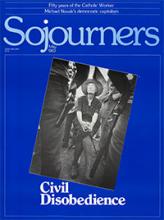On May 1, 1933, in the depths of the Great Depression, the first copies of the Catholic Worker were sold (for a penny a copy, of course) at a May Day demonstration in Lower Manhattan's Union Square. The major themes of that first Catholic Worker were the plight of exploited and unemployed workers and the surprising news that Catholic Christianity had more to offer them than the incessant nay-saying to communism that dominated the church in the U.S. In the months and years that followed, the Worker continued to develop those themes with extensive coverage of hunger, evictions, and strikes, and with Peter Maurin's "Easy Essays," which presented a down-to-earth alternative social vision drawn from Scripture and the teachings of some of the popes and Catholic philosophers.
Even more remarkably, the paper's writers and editors put flesh on their ideas by starting soup kitchens and houses of hospitality, joining workers on the picket lines, and establishing a farm commune that they hoped would be a model of Maurin's agrarian society, where it would be easier for people to be good. The Catholic Worker paper soon became the Catholic Worker movement.
Read the Full Article

